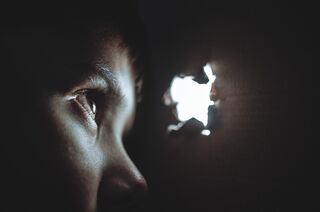Pornography
Language Matters: "Child Pornography" No Longer
Child pornography should be called child sexual abuse material.
Posted August 20, 2020

According to the U.S. Department of Justice, "federal law defines child pornography as any visual depiction of sexually explicit conduct involving a minor (persons less than 18 years old)." The dissemination of images and videos depicting sexually explicit images of minors is a serious problem both in the U.S. and internationally. With the proliferation of the internet, the number and types of images depicting exploited children have been growing exponentially. Specifically, the National Center for Missing and Exploited Children reviews over 25 million images each year and over 18,900 victims have been identified by law enforcement.
Sexually explicit images of children have traditionally been referred to as “child pornography”, “child porn” or “kiddy porn." However, there is a movement to change this nomenclature and to identify these images for what they are — child sex abuse material.
According to the Meriam Webster dictionary, pornography refers to the depiction of erotic behavior (as in pictures or writing) intended to cause sexual excitement. These images involve consenting adults and are transmitted to the public legally. Referring to child sexual abuse images as pornography can make the crime seem less harmful to the victims. Minors are not capable of giving consent and possessing, viewing and/or transmitting sexually explicit images and videos of children are illegal and constitute child sexual abuse.
Further, viewing, transmitting, and sharing sexually explicit images of children is not a victimless crime. There are real children who were abused in order to create those images and each transmission of their image is a further perpetuation of their abuse. A recent report by the Canadian Center for Child Protection found that survivors of childhood sexual abuse whose images were transmitted online experienced negative lifelong consequences of the abuse such as depression and trauma symptoms. Further, nearly 70% reported that they worry constantly that they will be identified by someone who has viewed the images and 30% reported that they were indeed identified by someone who had viewed their abuse online.
Given the serious consequences to the victims, in 2016, a Global Inter-agency Working Group composed of 18 organizations developed the Terminology Guidelines for the Protection of Children From Sexual Exploitation and Sexual Abuse, colloquially called the Luxembourg Guidelines. They offer clear guidance on terminology relating to child sexual abuse and exploitation including child pornography — which should now be referred to as Child Sex Abuse Material or CSAM.
While it may seem trivial to change a name, research has shown that the language we use impacts our perceptions of issues and problems, and what can be less trivial than protecting our children from sexual abuse?
References
For more information, see: Jeglic, E.L., & Calkins, C.A. (2018). Protecting you child from sexual abuse: What you need to know to keep your kids safe. New York: Skyhorse Publishing.


